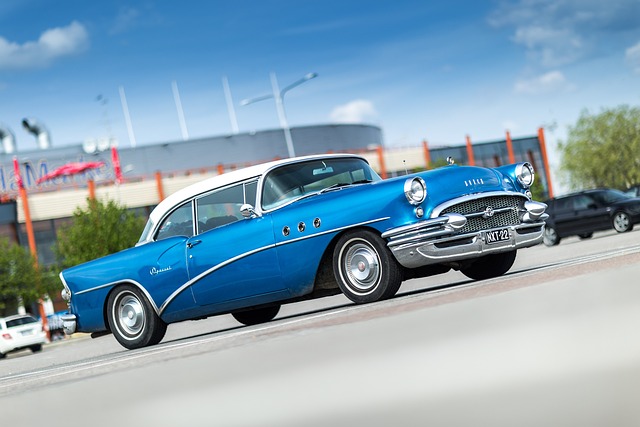Looking to register your car in California? This comprehensive guide walks you through every step, from understanding essential requirements to securing your unique vehicle identification number (VIN) using a trusted DMV VIN verifier. Gather necessary documents, visit a DMV or utilize online services, and pay registration fees. We’ll ensure you’re prepared, making the process seamless and stress-free.
- Understand California Car Registration Requirements
- Gather Necessary Documents for Car Registration
- Visit a DMV or Use Online Services for Registration
- Verify Vehicle Identification Number (VIN) Accurately
- Pay Registration Fees and Receive Your Plate
Understand California Car Registration Requirements

Before registering your car in California, it’s crucial to understand the state’s specific requirements. The California Department of Motor Vehicles (DMV) mandates several key steps and verifications for car registration. One essential component is the Vehicle Identification Number (VIN) verifier, a tool that ensures the vehicle’s authenticity and history. Using a DMV VIN verifier or even a mobile vin verifier can help streamline this process by confirming the VIN accuracy and checking for any potential issues like odometer rollback, which is a common concern during used car transactions.
Additionally, a thorough vin inspection is required to ensure compliance with California’s regulations. This involves verifying the vehicle’s make, model, year, and other details against the manufacturer’s records. With various options available, including mobile vin verification services, you can conveniently complete these steps. Ensure all documents are in order and meet the DMV’s specifications to avoid delays in the registration process.
Gather Necessary Documents for Car Registration

Before heading to the DMV for car registration, ensure you have all the necessary documents. This includes your vehicle’s Registration Application (form DV305), which can be obtained online or in person from the DMV. You’ll also need proof of insurance, a valid driver’s license, and the Vehicle Identification Number (VIN) verification report. The VIN is a unique 17-character identifier found on the vehicle’s chassis; you can obtain this through a mobile VIN inspection or by checking your car’s documentation.
For added convenience, consider using a mobile VIN verifier to gather this crucial information before your visit. This digital tool not only ensures you have the correct VIN but also simplifies the registration process. Remember to bring along any other supporting documents requested by the DMV, such as proof of ownership and payment for applicable fees, to avoid delays during car registration in California.
Visit a DMV or Use Online Services for Registration

You have two convenient options for registering your car in California: visit a DMV office or utilize online services. If you prefer a traditional approach, heading to a local Department of Motor Vehicles (DMV) is straightforward. Bring all necessary documents, including proof of ownership and identification, and fill out the registration application. Staff will guide you through the process and help verify your vehicle’s VIN using official tools, ensuring accuracy in record-keeping.
For those seeking a more modern solution, California’s DMV offers online registration, simplifying the procedure. You can initiate the process by accessing their website and entering your vehicle details. Some services even provide mobile vin verifier options, allowing you to complete the registration from the comfort of your home or on the go. This digital approach streamlines the traditional methods, making car registration more efficient and accessible.
Verify Vehicle Identification Number (VIN) Accurately

Before registering your car in California, it’s crucial to ensure your Vehicle Identification Number (VIN) is accurate. This unique 17-character code is essential for identifying your vehicle and can be found on the vehicle’s certificate of title or in its manual. A precise VIN is critical when you visit the DMV for registration as any discrepancies could lead to delays or issues.
Using a reliable dmv vin verifier or even considering a mobile vin inspection from a certified technician can help ensure your VIN is correct. These services offer convenience and accuracy, especially if you’re dealing with an older vehicle or one that has been in several hands, making it easier to avoid potential problems later during the registration process.
Pay Registration Fees and Receive Your Plate

After submitting your registration application and necessary documents, the next step is to pay the required registration fees. These fees vary based on vehicle type and other factors, so be sure to check the current rates on the California DMV website. You can typically pay online or in person at a local DMV office. Once your payment is processed, you will receive your unique vehicle identification number (VIN) verifier code from the DMV.
This code is essential for the next step: obtaining your license plate. The California DMV will assign a standard license plate to your vehicle and provide instructions on how to pick it up. Some residents opt for a personalized plate at an additional cost. Alternatively, you can choose to have your plates delivered to your home using a third-party service that offers mobile VIN inspection or a mobile vin verifier, making the registration process even more convenient.
Registering a car in California is a straightforward process that requires understanding specific requirements and gathering essential documents. By following these steps, including verifying the Vehicle Identification Number (VIN) accurately with a trusted DMV VIN verifier, you can efficiently complete the registration at a physical DMV or through online services. Remember to pay the necessary fees and receive your personalized license plate as proof of registration.
